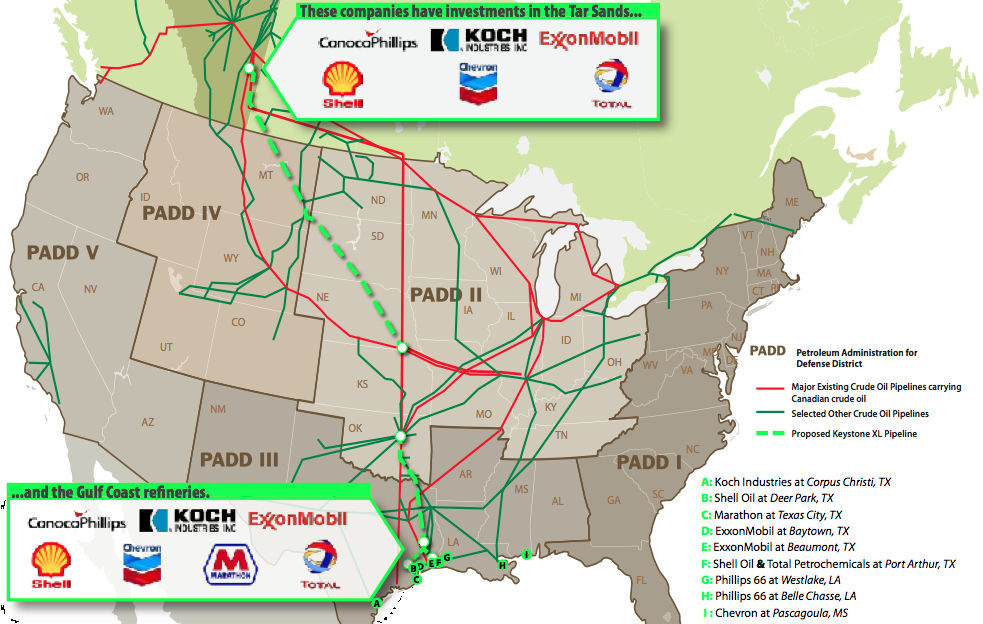By John Upton, Grist
If the Keystone XL pipeline is built, Americans could pay as much as 40 cents more per gallon for gasoline in some parts of the country, according to a new report by the nonprofit Consumer Watchdog [PDF].
That’s because oil extracted in Canada would start to bypass traditional American markets, traveling through the pipeline to the Gulf Coast and onto tanker ships bound for international markets where oil fetches higher prices.
“The pipeline is being built through America, but not for Americans,” Consumer Watchdog researcher Judy Dugan said in a statement. “Keystone XL is not an economic benefit to Americans who will see higher gas prices and bear all the risks of the pipeline.” From the report:
The aim of tar sands producers with refining interests on the Gulf Coast — primarily multinational oil companies — is to get the oil to their Gulf refineries, which would process additional oil largely for fuel exports to hungry foreign markets. Other oil sands investors, including two major Chinese petrochemical companies and major European oil companies, have an interest in exporting crude oil and/or refined products to their markets. Such exports would drain off what the tar sands producers consider a current oversupply, and help push global oil prices higher. …
U.S. drivers would be forced to pay higher prices for tar sands oil, particularly in the Midwest. There, gasoline costs could rise by 20 cents to 40 cents per gallon or more, based on the $20 to $30 per barrel discount on Canadian crude oil that Keystone XL developers seek to erase. Such an increase, just in the Midwest, could cost the U.S. economy $3 billion to $4 billion a year in consumer income that would not be spent more productively elsewhere. The West Coast imports much smaller amounts of Canadian oil in a larger and more complicated market. Even so, a sharp price hike for Canadian oil could bump Pacific Coast gasoline prices by a few cents a gallon.
The report also connects a few corporate dots, showing who’s really intended to benefit from Keystone XL:

